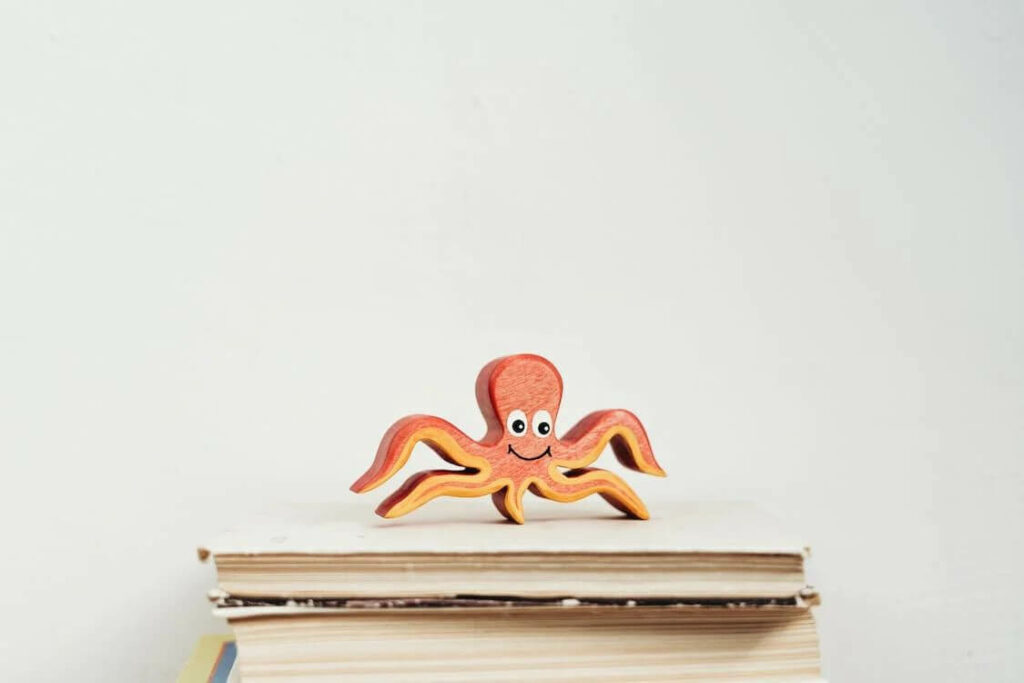Octopuses are among the most fascinating creatures of the marine world, not just because of their intelligence and camouflage abilities, but also due to their unique reproductive behaviors. A striking example of this is the male octopus’s use of a specialized arm for reproduction.
In male octopuses, one of their eight arms serves a dual purpose. This arm, typically the third one on the right, is called the hectocotylus. Unlike the other arms, which are used for mobility and feeding, the hectocotylus has a more intimate role – it is effectively the male’s reproductive organ. This adaptation is not just a quirky biological fact; it’s a testament to the evolutionary creativity seen in cephalopods.
The reproduction process in octopuses is as intriguing as it is complex. The hectocotylus plays a central role here. The male uses this arm to transfer spermatophores, which are essentially packets of sperm, into the female’s mantle cavity. This process is delicate and requires precision. The male must ensure that the spermatophores are correctly placed for successful fertilization.
This method of reproduction is quite different from what we observe in most other sea creatures. There is often no direct physical contact during the mating process. For instance, many fish species release eggs and sperm into the water and fertilization happens externally. In contrast, the octopus’s method is more direct and intimate, demonstrating a unique approach to reproduction in the animal kingdom.
Mating can be a risky affair for male octopuses. In some species, females are known to be aggressive and may even attack and eat the male after or during mating. This is why the approach to mating is often cautious and calculated. The male must be careful not to provoke the female’s predatory instincts. This behavior underscores the high-stakes nature of reproductive interactions in the marine world, where the line between reproduction and survival is often thin.
The reproductive strategy of octopuses is not just a curiosity for marine biologists; it’s a window into the diversity of life and the various adaptations species have evolved to ensure their survival and the continuation of their genes. It’s a reminder of the complexity and ingenuity of nature, and the myriad ways life has developed to thrive in different environments.
The octopus’s use of the hectocotylus challenges our understanding of animal anatomy and reproductive strategies. It’s a striking example of how varied reproductive methods can be in the animal kingdom, and it highlights the importance of understanding these processes for conservation and study.
The Third Right Arm in Male Octopuses

In the diverse world of octopuses, the male’s third right arm holds a secret beyond its usual tasks. This arm, known as the hectocotylus, is not just another limb; it’s a critical component of the octopus’s reproductive system. The tip of this unique arm features the ligula, effectively the reproductive organ. In some species, this arm stands out due to having fewer suckers compared to its counterparts. This adaptation is a fascinating example of nature’s ingenuity in designing reproductive strategies.
Versatile Tools of Survival
Octopus arms are marvels of biological engineering, serving multiple functions crucial for survival. Beyond reproduction, these eight sucker-covered appendages enable octopuses to walk, grasp prey, adhere to surfaces like coral reefs, and even ‘taste’ through chemotactility. This versatility contrasts with the more hunting-focused tentacles of their cephalopod cousins, the squids. Each arm is a testament to the octopus’s adaptability in the marine environment.
Do Octopuses Have a Dominant Arm?
Just like humans have a dominant hand, octopuses exhibit preferences in their limb usage. Research reveals that octopuses often favor their second arm from the middle, irrespective of the task at hand. This preference extends to the arm used for the eye observing the prey, highlighting a coordinated and complex nervous system that governs limb movements. Such preferences underline the sophistication of octopus behavior and cognition.
The Mating Ritual of Octopuses
The male octopus employs a distinctive approach to impregnate the female. The hectocotylus, a tentacle-like arm, detaches and independently makes its way into the female’s mantle cavity to release sperm. This remarkable method, seen in species like the argonaut octopus, underscores the diverse and sometimes bizarre reproductive strategies in the animal kingdom.
Arms Over Tentacles
The octopus’s limbs are rightly termed ‘arms’ rather than ‘tentacles’ due to their multifunctionality. These arms are not just for feeding; they play roles in locomotion, defense, and in males, reproduction. This distinction from tentacles, typically used primarily for feeding, highlights the evolutionary path octopuses have taken, making them one of the most versatile and intriguing creatures of the sea.
Octopus Arms and Reproduction
The hectocotylized third right arm of male octopuses is a remarkable evolutionary adaptation. In some cases, this arm is discreetly stored in a pouch under the right eye, giving an illusion of the male having only seven arms. During mating, the male octopus may detach this arm, entrusting it to the female for egg fertilization. This extraordinary method of reproduction is not just a quirk of nature but a critical strategy for the survival of the species.
Lesser Known Facts About Male Octopus
- Some species of male octopuses can detach their specialized arm, the hectocotylus, after mating. This arm, once detached, continues to function independently to ensure successful fertilization.
- Male octopuses often experience a drastically shortened lifespan after mating. This phenomenon, known as semelparity, means they typically die shortly after their first and only breeding season.
- During mating rituals, male octopuses can exhibit dominance displays. These include changing color, posturing, and even engaging in aggressive interactions with other males to compete for a female’s attention.
- Smaller male octopuses sometimes adopt sneaky mating tactics to avoid confrontation with larger, more dominant males. They can disguise themselves as females or approach a female surreptitiously to mate without being noticed.
- Male octopuses have a highly complex nervous system, with the majority of their neurons located in their arms. This allows for incredible control and sensory perception, crucial in their environment and for mating.
- Depending on the species, male octopuses employ varied mating strategies. Some may guard the female after mating, while others simply leave after the act, with no further interaction.
- Male octopuses are generally solitary creatures, only seeking out females during the mating season. Outside of this period, they prefer to live and hunt alone.
- In addition to using camouflage for protection from predators, male octopuses can also use their color-changing abilities as part of mating rituals, either to attract females or to avoid detection by rival males.
- Males can exhibit intelligent courtship behaviors, using a combination of tactile and visual signals to woo a potential mate. This might include gentle caresses with their arms or displaying specific colors and patterns.
- There is significant variation in size and shape among male octopuses across different species. This diversity is often related to their specific environmental adaptations and mating strategies, ranging from small, deep-sea dwellers to larger, more aggressive species.
The octopus, with its unique use of the hectocotylus for reproduction, offers a fascinating glimpse into the diverse and ingenious ways nature ensures the propagation of species. This remarkable adaptation is not just a biological anomaly but a symbol of the evolutionary creativity that permeates the natural world. It reminds us that life has found extraordinary ways to flourish and continue even in the deep and often mysterious ocean.

Are you drawn to the enigmatic allure of wolves? Venture into an all-encompassing exploration of…

The common belief that chameleons change their colors to match their environment is a bit…

Porcupine courtship begins with a rather unusual ritual – nose rubbing. When a male approaches…

In the vast and mysterious world of marine animals, there lies a common misconception that…

